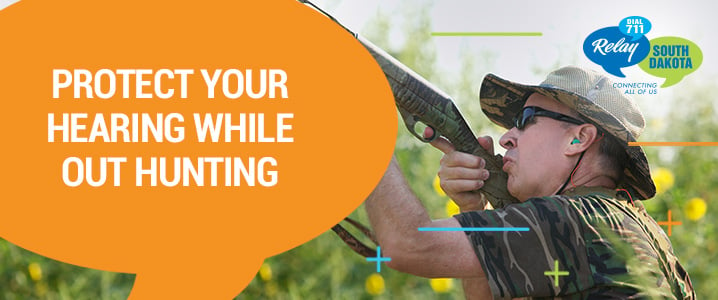
Protect Your Hearing While Out Hunting

When it comes to October, a major holiday usually comes to mind. We’ll give you three hints: It brings people together, people often dress up, and there’s a lot of orange. That’s right. We’re talking about Opening Pheasant Day. What were you thinking of?
Here In South Dakota, hunters from all over the United States take part in our annual pheasant-hunting tradition. With those hunters come their trusty firearms. With those firearms come loud noises.
The Scope of Firearm-Related Hearing Loss
In America, approximately 48 million Americans have some degree of hearing loss. You’d be surprised at what fraction of that population has firearm-related hearing issues: at least one third.
According to the ASHA (American Speech-Language-Hearing Association), exposure to noise greater than 140 dB can permanently damage a person’s ability to hear. Nearly all firearms produce a sound that’s considerably more than 140 dB.
The most popular firearm hunters use to bag pheasants is the 12 Gauge Shotgun. The sound from a standard blast, depending on the size of your barrel, hits anywhere between 151.5 and 156.10 dB. Hunters will probably tell you that, when using this firearm out in the field, you’ll have a great chance of bringing home a pheasant.
What they don’t tell you is that if you don’t use any ear protection, chances are you’ll also bring home some permanent damage to your eardrums.
The Science of Sound
It’s Pheasant Opening Day. You have a bird in your sights. You hold your shotgun close to your face, look down the scope, steady your shot, and BAM! Your shotgun lets out a mighty roar, and you got your bird. If you aren’t wearing ear protection, you probably hear a high-pitched ring too.
That’s a sign that you’ve done damage to your hearing.
Firearm-related hearing loss can come from prolonged exposure to a loud environment (i.e., an open field where hunters are firing off their shotguns). Make sure you don’t stand directly by someone as they fire – that’s more so to protect your life rather than your hearing.
If you’re solo hunting, it’s your own firearm of which you should be most mindful.
People who use firearms will often have greater damage in one ear over the other. ASHA states that the left ear (for right-handed shooters) often suffers more damage than the right ear. That’s because the left ear is closer to, and directly in line with, the firearm’s muzzle. The right ear is partially protected by head shadow.
Head shadow is an area of reduced amplitude of sound, because it’s obscured by the head. This means that there’s less room for the sound to travel directly to your right ear. The reason the left ear would be impacted is due to the sound traveling through and around the head to reach that ear.
This can cause high-frequency, permanent hearing loss, which is more common in firearm users. This can result in the user having difficulty hearing sounds like “s,” “th,” or “v” and others with a high pitch.
Here’s Some Sound Advice
You can prevent hearing loss when using appropriate hearing protective devices:
- Earplugs
- Earmuffs
While these do help, it’s been proven that hunters are less likely to wear them because of how they obstruct their ability to hear approaching game or other noises.
However, these aren’t their only options. According to the Armed Defense Training Association, there are many products that allow shooters to hear softer sounds while also protecting them from louder ones.
There are two kinds of HPDs (Hearing Protection Devices) designed for shooting sports: electronic and nonlinear.
Electronic HPDs have:
- Microphones that pick-up sound outside of the earmuffs
- An amplifier that makes low-volume sounds easier to hear
- Speakers that project the amplified sounds to your ear inside the muffs
These electronic devices will turn amplification off when they pick up high-frequency sounds that will cause damage to the ears. Once the dangerous sound is over, the device continues to amplify low-level sounds. Electronic HPDs come in many forms:
- Earmuffs
- Custom In-Ear Devices
- One-Size-Fits-All Plugs
- Behind-The-Ear Devices
Nonlinear HPDs are not electronic. They allow soft and moderate sounds to pass through while continuing to reduce loud sounds. They come in the form of earplugs or custom earmolds. ASHA recommends getting HPDs that have filters. They perform better than ones with mechanical valves – as they might not close quickly enough to protect you from loud noises.
Additional Protective Tips
- Always wear hearing protection when shooting a gun
- Keep HPDs handy
- Double-protect your ears
- Choose a smaller firearm
- Use electronic or nonlinear HPDs when hunting
Whether it’s out hunting in a field or out at the range, the next time you’re packing your essentials, put proper ear protection near the top of your list. Keep these tips in mind, and your ears will stay as sharp as your aim.

